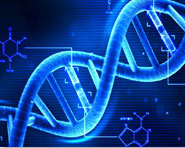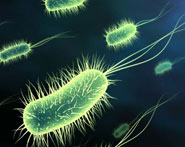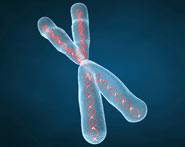


 النبات
النبات
 الحيوان
الحيوان
 الأحياء المجهرية
الأحياء المجهرية
 علم الأمراض
علم الأمراض
 التقانة الإحيائية
التقانة الإحيائية
 التقنية الحيوية المكروبية
التقنية الحيوية المكروبية
 التقنية الحياتية النانوية
التقنية الحياتية النانوية
 علم الأجنة
علم الأجنة
 الأحياء الجزيئي
الأحياء الجزيئي
 علم وظائف الأعضاء
علم وظائف الأعضاء
 الغدد
الغدد
 المضادات الحيوية
المضادات الحيوية|
Read More
Date: 28-4-2016
Date: 10-12-2015
Date: 5-5-2016
|
Each Termination Codon Has Nonsense Suppressors
KEY CONCEPTS
- Each type of nonsense codon is suppressed by tRNAs with mutated anticodons.
- Some rare suppressor tRNAs have mutations in other parts of the molecule.
Nonsense suppressors fall into three classes, one for each type of termination codon. TABLE 1 describes the properties of some of the best characterized suppressors.
TABLE 1. Nonsense suppressor tRNAs are generated by mutations in the anticodon.

The easiest to characterize have been the so-called amber suppressors. In E. coli, at least six tRNAs have been mutated to recognize UAG codons. All of the amber suppressor tRNAs have the anticodon CUA← , in each case derived from wild type by a single base change. The site of mutation can be any one of the three bases of the anticodon, as seen in the mutants supD, supE, and supF. Each suppressor tRNA recognizes only the UAG codon instead of its former codon(s). The amino acids inserted are serine, glutamine, or tyrosine—the same as those carried by the corresponding wild-type tRNAs.
Ochre suppressors also arise by mutations in the anticodon. The best known are supC and supG, which insert tyrosine or lysine in response to both ochre (UAA) and amber (UAG) codons. This is consistent with the prediction of the wobble hypothesis that UAA cannot be recognized alone.
A UGA suppressor has an unexpected property. It is derived from tRNATrp , but its only mutation is the substitution of A in place of G at position 24. This change replaces a G-U pair in the D stem with an A-U pair, increasing the stability of the helix. The sequence of the anticodon remains the same as the wild-type CCA← , so the mutation in the D stem must in some way alter the conformation of the anticodon loop, allowing CCA← to pair with UGA in an unusual wobble pairing of C with A. The suppressor tRNA continues to recognize its usual codon UGG.
A related situation is seen in the case of a particular eukaryotic tRNASer. Bovine liver contains a tRNA with the anticodon mCCA← . The wobble rules predict that this tRNA should recognize the tryptophan codon UGG, but in fact it recognizes the termination codon UGA. It is possible that UGA is suppressed naturally in this situation.
The general importance of these observations lies in the demonstration that codon–anticodon recognition of either wild-type or mutant tRNA cannot be predicted entirely from the relevant triplet sequences but may in some cases be influenced by other features of the molecule.
Trp
←
←
Ser m ←
or mutant tRNA cannot be predicted entirely from the relevant
triplet sequences but may in some cases be influenced by other
features of the molecule.



|
|
|
|
لصحة القلب والأمعاء.. 8 أطعمة لا غنى عنها
|
|
|
|
|
|
|
حل سحري لخلايا البيروفسكايت الشمسية.. يرفع كفاءتها إلى 26%
|
|
|
|
|
|
|
بأجواءٍ يغمرها الفرح والابتهاج والسرور ... الأمانة العامة للعتبة العسكرية المقدسة تقيم حفلها المركزي بمناسبة ذكرى ولادة أمير المؤمنين الإمام علي (عليه السلام)
|
|
|